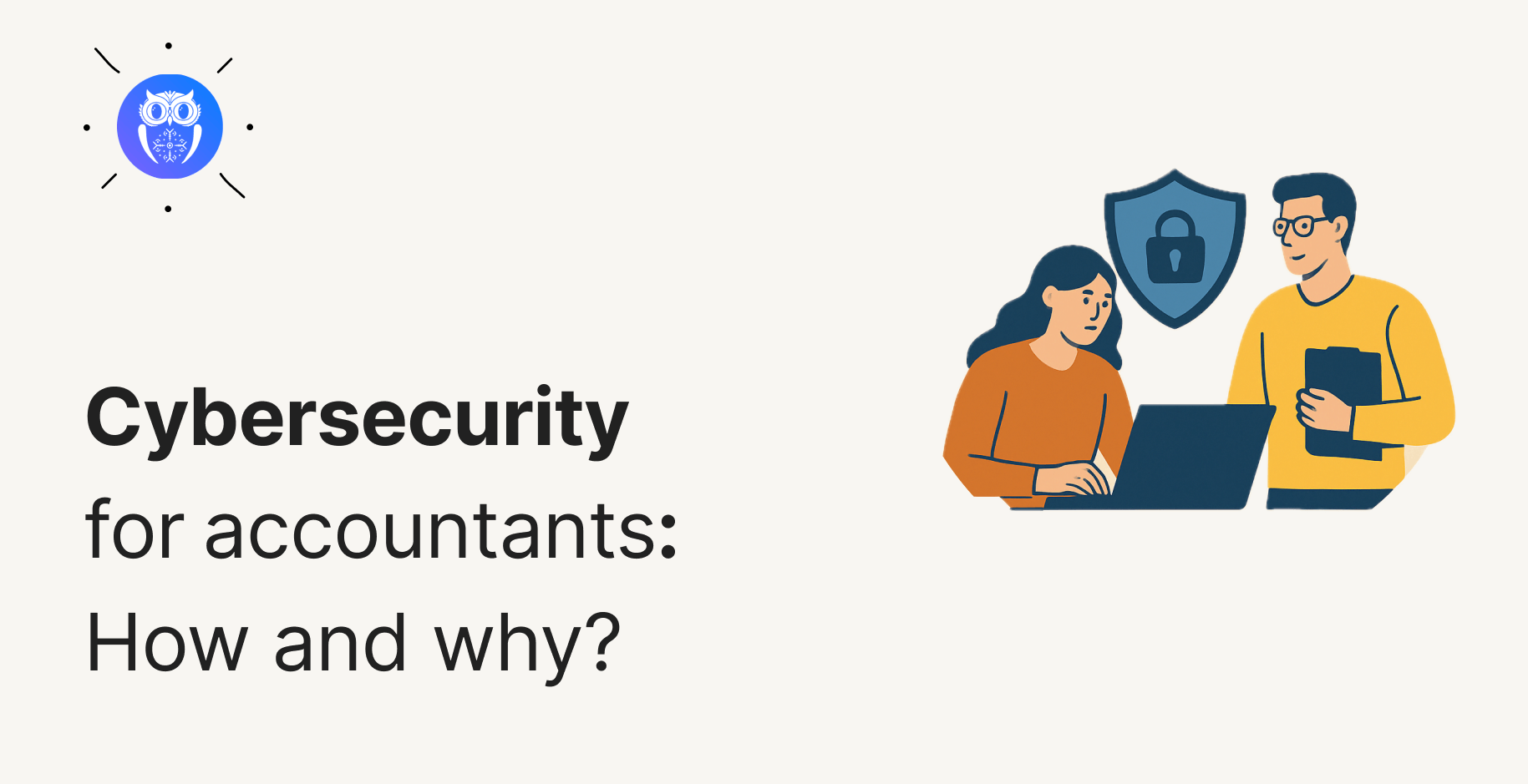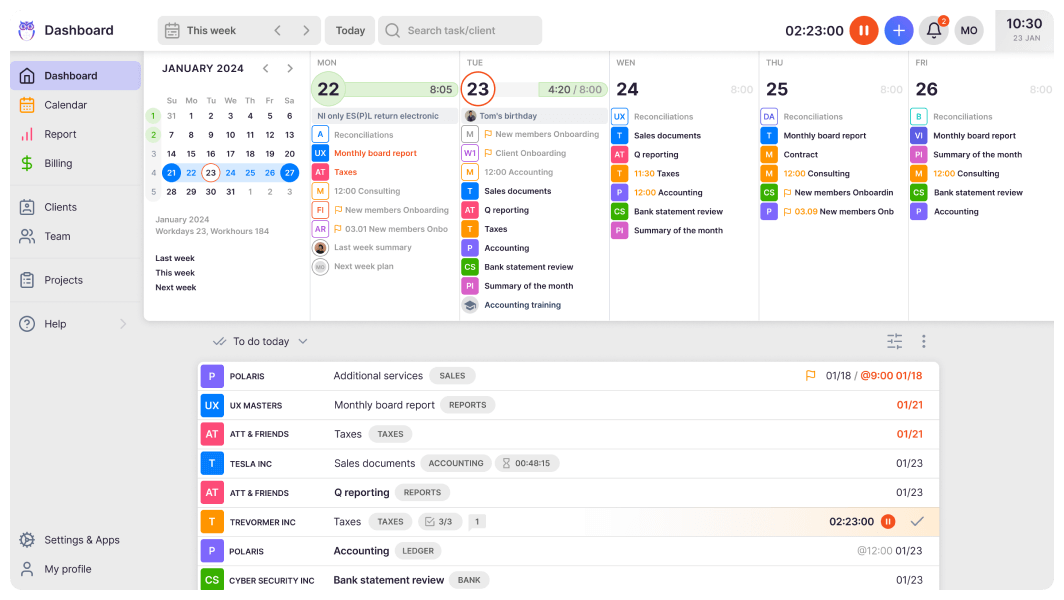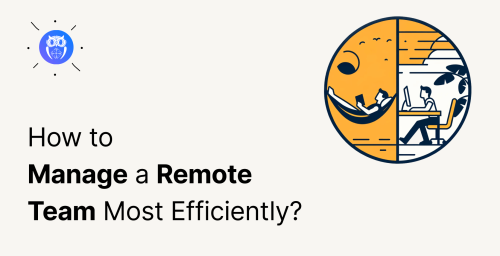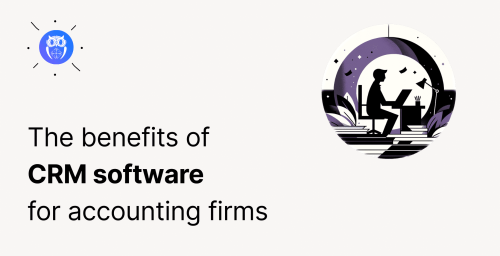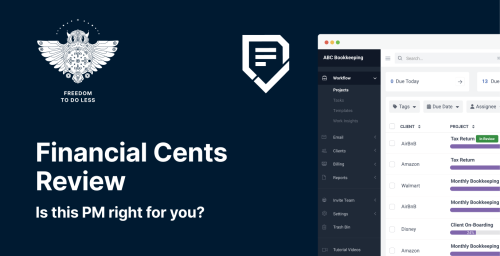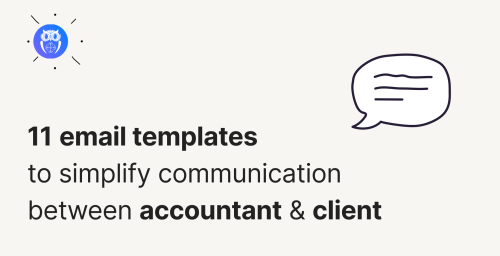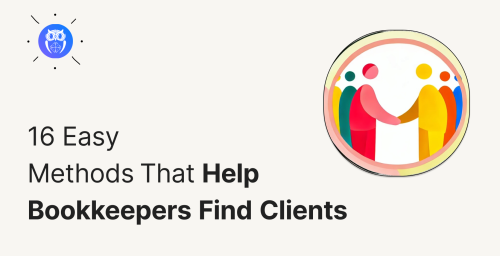Over the last several years, cybercrime has exploded dramatically. According to IBM’s 2023 Cost of a Data Breach Report, the global average cyber attack losses reached $4.45 million — a 15% increase from three years ago. What’s even worse? The financial services sector is one of the most targeted industries. Accounting firms of all sizes are becoming more and more attractive to cyber criminals.
However, many firms are still unprotected. The Thomson Reuters survey showed that only 34% of accounting professionals feel “very confident” in their firm’s ability to prevent cyber attacks. Cybercriminals exploit the human factor, outdated software, and poor policies.
In this article, we’ll break down the real risks, explore what makes accounting cybersecurity so difficult, and, most importantly, share practical strategies that can help protect your firm, your clients, and your reputation.
Top cybersecurity risks accountants shouldn’t ignore
In 2022, the U.S. Congress passed the Federal Data Privacy and Protection Act. The regulation obliges businesses to share more responsibility for protecting users’ personal data. For accounting firms, this means protecting every spreadsheet, email, and login associated with a client’s financial data. We identify the most common and dangerous threats today.
- Phishing and vishing attacks. Phishing means using deceptive emails to trick recipients into clicking on malicious links. Vishing (voice phishing) shares the same tactic but over the phone. An attacker may call and introduce himself as a vendor or IT support, asking for login credentials or two-factor authentication codes.
- Business email compromise (BEC). In BEC attacks, they don’t rely on malware. Criminals mimic the email of a trusted executive or customer to request transfers, payments, or confidential files.
- Malware and ransomware. With this method, cybercriminals gain access to your system in a single click, and once they do, they won’t hesitate to exploit it. Ransomware takes your files hostage and demands payment to unlock them.
- Cloud security vulnerabilities. As more and more companies move to cloud-based accounting platforms, cloud misconfigurations become a major security gap.
- Social engineering. It’s not about technology, it’s about people. Hackers use manipulation to get people to trust them and give them access. A simple LinkedIn message, a fake job inquiry, or a coffee chat at a networking event can be an entry point.
- Insider threats. Not every breach is caused by external threats. Unhappy employees, poorly trained staff, careless contractors, or other parties can accidentally (or intentionally) leak data.
- Risks of unsafe mobile connections. Accountants on the go need to be able to connect safely to data networks. When you have to travel between offices or client meetings in different cities or countries, like Mexico, you need connections that are safe and reliable. For example, using an eSIM in Mexico can help make mobile networks safer to use, lowering the risk of data interception or inconsistent service when you’re outside of the office.
Real-world examples of accounting cybersecurity breaches
BDO Canada suffered from a ransomware attack (2023)
In mid-2023, BDO Canada, one of the country’s largest accounting and consulting firms, confirmed a cybersecurity breach caused by a ransomware attack.
The attackers focused on third-party systems used for file transfers, particularly the popular file transfer software MOVEit, which had a critical zero-day vulnerability. Although BDO informs that no internal systems were compromised, sensitive client data stored or transferred via MOVEit may have been at risk.
PwC Australia email hack leads to leak of confidential tax information (2022-2023)
This case isn’t a technical hack but shows how internal confidential data handling can result in a major scandal.
In 2022-2023, PwC Australia came under fire after it emerged that confidential government tax plans had been passed to other colleagues and then used to advise corporate clients. The breach of trust and internal protocols triggered regulatory investigations, the loss of significant contracts, and a complete restructuring of PwC’s government consulting business in Australia.
Wolters Kluwer malware affects global accounting software (2023)
Wolters Kluwer, a major global provider of tax and accounting software (e.g., CCH Axcess), suffered a multi-day outage in 2023 due to malware. The company had to shut down most of its systems to contain the threat. As a result, thousands of accounting firms lost access to key tools during peak filing periods.
Cybercriminals don’t care about your accounting firm size
It’s easy to think of cyber security threats as distant problems — something that happens to “other companies.” When we hear about cyber attacks, it’s usually in the context of big names. But here’s the truth: there is no ”small business” if we talk about financial data. According to a report by Verizon, 43% of cyberattacks target small enterprises.
Little firms work with the same sensitive financial data. Moreover, they typically don’t have the same cybersecurity infrastructure as larger companies. The same applies to nonprofits, which also handle large volumes of sensitive financial data, and tools like Donorbox are taking steps to prevent fraud and keep donor trust intact. Many still rely on outdated software, minimal training, or basic antivirus programs; attackers know how to exploit this.
Strategies for accounting cybersecurity
Knowing the risks is just the first step. The real value comes from doing something about them. Here’s a list of proven accounting cybersecurity strategies that every business should implement.
Multi-factor authentication (MFA)
According to America’s Cyber Defense Agency, MFA can block over 99% of automated cyber attacks. Instead of relying on just a strong password policy, it requires users to verify their identity using at least two factors from different categories:
- password,
- authenticator app, OTP,
- biometric ID.
Even if a hacker steals your password through phishing or brute force, they won’t get in without the extra layer. Use app-based authenticators instead of SMS codes, which are more vulnerable.
Encrypt financial data
Encryption ensures that even if your data is intercepted or stolen, it remains useless to attackers. For accountants, this means encrypting:
- Local storage (hard drives and servers).
- Cloud environments.
- Communication channels.
- Files at rest (on your servers or computers).
- Files in transit (being sent via email or cloud).
- Backups and archives.
AES-256 encryption is the standard of accounting cybersecurity. Financial institutions and government agencies worldwide use it. Implementation tips:
- Use BitLocker (Windows Pro), VeraCrypt, or FileVault (Mac) to encrypt devices.
- Deploy S/MIME or PGP encryption for emails containing financial attachments.
- For cloud services, verify that providers offer end-to-end encryption.
Conduct regular software updates
Unpatched systems are soft targets. Cybercriminals actively exploit outdated software, including operating systems, plugins, and even accounting platforms. What to update regularly:
- Accounting software,
- Operating systems,
- Web browsers and plugins,
- Antivirus and security tools.
Patch management
Patch management is the process of tracking, testing, and applying security patches to close known vulnerabilities. Some patches are released urgently — within 24 hours of a vulnerability becoming known. NIST SP 800-40 recommends deploying a patch within 72 hours for high-risk vulnerabilities.
Use automated patch management tools to stay ahead. Solutions like ManageEngine, Action1 Ivanti, or Microsoft SCCM help companies ensure that nothing slips through the cracks.
Multi-tiered backup strategy
Ransomware is designed not only to encrypt your primary data but also to find and destroy your backups. That’s why redundancy and isolation are critical. But having just one backup, especially on a single system, isn’t enough. Follow the 3-2-1 rule:
- Keep 3 copies of your data.
- Store them on 2 different media (e.g., cloud and external drive).
- Ensure 1 is off-site or offline (air-gapped).
Cloud + local + offline is the best option for any enterprise. Cloud backups can be quickly restored, while offline backups protect against malicious encryption.
Security audits and assessments
Internal and third-party security assessments identify blind spots in your network, systems, and processes. Types of assessments:
- Vulnerability scans — automated checks for known flaws.
- Penetration testing — ethical hacking to simulate real attacks.
- Configuration audits — ensuring that software and servers are securely set up.
- Compliance assessments — e.g., SOC 2, ISO 27001, IRS Pub. 4557 compliance.
Hire a certified ethical hacker (CEH) annually for external penetration testing. The IRS recommends that accounting firms conduct a security risk assessment annually as part of its Security Six framework.
Web application firewalls (WAF)
If you use client portals, online forms, or web-based accounting software, WAF protects it. It filters, monitors, and blocks bad traffic (SQL injection, cross-site scripting (XSS), credential stuffing, bot traffic) before it hits your web apps. WAFs should be part of a larger Web Application Security Testing (WAST) process that includes dynamic analysis tools.
DDoS protection
Distributed denial-of-service (DDoS) attacks flood your website or services with traffic, causing them to crash. For businesses that use client dashboards or cloud-based accounting systems, this can be a serious operational risk, especially during tax season. How to prepare:
- Use cloud-based DDoS protection.
- Monitor traffic spikes.
- Set up speed limits.
In Q4 2023, accounting SaaS platforms saw an increase in the number of “low-and-plow” DDoS attacks – invisible flows that bypass traditional speed limiters.
SOC for Cybersecurity: What Accounting Firms Need to Know
Accounting cybersecurity is a system.
And it’s not only about a technical issue but also a matter of compliance, user trust, and business continuity. System and Organizational Controls (SOC) involves building a strategic, structured defense system that monitors potential cyber threats, detects anomalies, and responds to incidents.
On the one hand, there is the Security Operations Center, a physical or virtual command hub responsible for monitoring and responding to cybersecurity threats. On the other, there are SOC audit reports like SOC 1, SOC 2, and SOC for cybersecurity systems, which independent auditors provide.
They help you determine whether your organization has the right controls to protect customer data.
The Federal Data Protection Act of 2024 requires more robust personal and financial information protection, making companies responsible for preventive and reactive measures. Firms need to adopt a structured accounting cybersecurity policy. For companies without internal security teams, SOC responsibilities are often outsourced to Managed Security Service Providers (MSSPs). If you don’t know where to start, this guide to SOC best practices offers a clear roadmap for building or assessing your cybersecurity operations.
Overall, a strong password isn’t enough to protect you. Your company needs a comprehensive cybersecurity strategy. Start with the essentials:
- Enable MFA to prevent unauthorized logins.
- Encrypt all the financial data, whether it’s stored on the local computer or in the cloud. It’s equally important to secure your devices using top-rated cleanup tools that remove residual data and unwanted files.
- Route remote and mobile access through a VPN (e.g., Mysterium VPN), and restrict VPN locations to approved jurisdictions.
- Keep your systems up-to-date and strong, with regular patch management.
- Follow the 3-2-1 backup rule.
- Conduct regular security audits and penetration tests.
- Secure your client portals with WAFs and DDoS prevention tools.
Don’t fall into the trap of thinking your firm is too small to be a target. Cybercriminals search for firms with poor defences.
Uku is a cloud-based practice management software developed for accountants and bookkeepers to improve productivity, efficiency, and security. It helps you work more effectively, with less chance of errors and to a high standard of accuracy.
Want to know how it can fit into your secure workflow? Schedule a 30-minute personalized Uku demo or sign up for a free account.
FAQ
How is cybersecurity used in accounting?
Cybersecurity protects sensitive financial data from hacking, phishing, and ransomware. The practice of cybersecurity enables accountants to safeguard client records while ensuring compliance and building trust.
Can an accountant study cybersecurity?
Yes, they can. Many accountants pursue cybersecurity certification and brief training to enhance their knowledge of data protection, risk management, and compliance requirements.
Learn more about free bookkeeping courses.
Can a CPA help with cybersecurity?
Absolutely. CPAs help organisations by providing internal control guidance and assessing data protection practices and cybersecurity measures for financial compliance.





